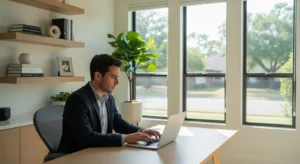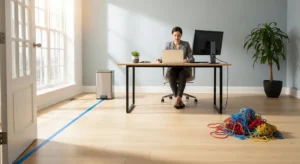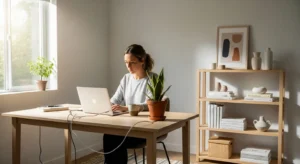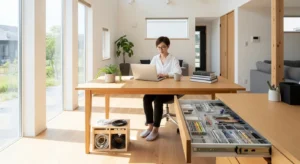
Look around your workspace. What do you see? A stack of papers you meant to file? A collection of pens, some of which may not even work? A tangle of charging cables for devices long gone? This isn’t just clutter. This is friction. Every out-of-place object is a tiny, subconscious distraction, a decision waiting to be made, pulling your focus away from the work that truly matters. This constant, low-grade hum of disorder is what we call visual friction, and it’s a silent killer of productivity.
You’ve likely heard of the KonMari Method, the tidying philosophy popularized by Marie Kondo. Her mantra of keeping only what “sparks joy” has transformed homes around the world. But what if we told you that this same method could be one of the most powerful productivity tools you ever adopt? The goal isn’t just a minimalist aesthetic or a perfectly organized closet. It’s about creating an environment that actively supports your focus, calms your mind, and makes deep work not just possible, but effortless.
Tidying up, in the KonMari sense, is not about a constant, draining battle against mess. It’s about a one-time, comprehensive reset followed by simple, ingrained habits that maintain order with minimal effort. It’s about designing a system for your life and work where your environment works for you, not against you. Forget relying on sheer willpower to stay focused in a chaotic space. Instead, let’s build a space that nurtures clarity and lets you do your best work. This guide will walk you through how to adapt the core principles of the KonMari method for productivity, transforming your space into a sanctuary of calm efficiency.
📚 Table of Contents
- From Clutter to Clarity: Zoning and Workflow
- The Power of the Reset: Daily Habits for Sustained Order
- Thriving in Reality: Strategies for Small and Shared Spaces
- Putting It Into Practice: Two Mini-Makeovers
- Frequently Asked Questions About Tidying for Productivity
- How do I deal with the mountain of paper I’ve accumulated over the years?
- My family or roommates are not on board. How can I maintain a tidy space?
- I struggle with sentimental items. How can I declutter them without feeling guilty?
- My apartment is tiny. Do these principles still work if I don’t have much storage?
- Your First Steps to a More Focused Life
From Clutter to Clarity: Zoning and Workflow
The foundation of the KonMari method is deceptively simple: everything you own should have a designated home. When an item has a home, you never have to think about where to put it away. This single principle is revolutionary for productivity because it eliminates thousands of micro-decisions you make every day. Where does this pen go? What should I do with this piece of mail? Where did I leave that notebook? When each answer is pre-determined, your cognitive load lightens, freeing up precious mental energy for creative thinking and problem-solving.
This is where we introduce the concept of working zones. A zone is a designated area for a specific type of activity. Your desk might be a “deep work” zone, a comfortable chair could be a “reading and research” zone, and a small, clear counter space could be your “admin and planning” zone. By physically separating these activities, you send powerful cues to your brain. When you sit at your desk, your mind understands it’s time to focus. There are no hobby supplies or unpaid bills in this zone to distract you—only the tools you need for the task at hand.
Start by considering the flow of your day. Where do things enter your home or office? Mail, packages, and notes often create clutter hotspots near the entrance. Designate a single inbox tray for all incoming paper. This is its temporary home. Where do you work on your most important projects? That area should be stripped of everything but the absolute essentials. The goal is to create a frictionless path for your daily tasks. If you need a specific report, you know exactly which file it’s in. If you need a charger, you go to the single, designated charging station where all cables live neatly.
A common mistake is to over-organize with complex labeling systems. The KonMari approach is more intuitive and visual. Instead of labeling every single cord, have one small, clear box that is the designated home for all charging cables. You don’t need a label that says “Pens”; you need a single cup or drawer divider where all your pens live. This label-light approach relies on categorization. When you group like items together—all batteries in one container, all notebooks on one shelf, all reference books in one section—your brain naturally learns the system. You see the container and know what’s inside. This reduces visual noise and makes finding and putting things away feel second nature.
The process begins, as Marie Kondo suggests, by gathering all items of a single category. If you’re organizing your office supplies, gather every single pen, paperclip, notebook, and stapler from every corner of your home. Seeing the sheer volume is often a powerful motivator. Then, handle each item and ask not just “Does it spark joy?” but also, “Is this essential for the work I want to do? Does it support my focus?” Discard what’s broken, redundant, or irrelevant. For what remains, assign a permanent, logical home within its appropriate working zone. This upfront investment of time pays dividends in a future of effortless focus and clarity.

The Power of the Reset: Daily Habits for Sustained Order
A major tidying event is a fantastic start, but the real magic of a productive space lies in its maintenance. This is where most organizational systems fail. They require too much time and energy, and within weeks, the clutter creeps back. The KonMari philosophy, when applied to productivity, is about building simple, almost invisible routines that prevent chaos from ever taking hold again. This is achieved through the power of the daily reset.
A reset is a short, defined period of time at the end of the day or work session dedicated to returning your space to its neutral, organized state. We call these designated tidy-up moments reset points. Your main reset point might be a 10-minute tidy at the end of your workday. During this time, you put away papers, wipe down your desk, return pens to their holder, and plug in your devices at their charging station. It’s not about deep cleaning; it’s about restoring order. This simple habit ensures that you begin every single day with a clean slate—a calm, inviting workspace that doesn’t carry the baggage of yesterday’s tasks.
To make this reset truly effective, adopt the one-touch rule. This productivity principle states that whenever you touch an item, you deal with it completely. When mail comes in, you don’t put it on the counter to sort later. You touch it once: open it, decide what to do with it (recycle, file, or action), and put it in its designated spot immediately. This applies to everything. When you’re finished with a book, don’t leave it on the coffee table; put it back on the shelf. The one-touch rule is the active-verb version of “a home for everything.” It turns a passive concept into an active, clutter-busting habit.
Your desk and digital spaces are prime candidates for a daily reset. For your physical desk, the goal is to end the day with as much clear surface as possible. A clear desk equals a clear mind. For your physical inbox tray, make it a habit to process it daily. Let nothing sit for more than 24 hours. This prevents the dreaded paper backlog from ever forming.
This same logic applies to your digital environment, which is often a greater source of visual friction than our physical spaces. A cluttered desktop with dozens of icons is the digital equivalent of a messy desk. At the end of your day, take two minutes for a digital reset. Drag all new files from your desktop into a single “To Process” folder. Then, once a week, go through that folder and file everything properly. Your folder system doesn’t need to be complex. A few high-level categories will suffice: Projects, Archive, Finances, and Personal. The goal is a clean digital desktop that promotes focus, not anxiety.
Similarly, your email inbox is not a to-do list. Apply the one-touch rule here as well. When you open an email, decide its fate immediately. If it takes less than two minutes to respond, do it right away. If it requires more work, move it to a task management system or a dedicated “Action” folder. If it’s for reference, file it in an archive folder. Aim for “Inbox Zero” not as a stressful mandate, but as the natural outcome of a daily reset habit. By tidying up your physical and digital spaces for just a few minutes each day, you create a powerful, self-reinforcing cycle of order and productivity.

Thriving in Reality: Strategies for Small and Shared Spaces
The idea of a perfectly zoned, minimalist workspace is inspiring, but what if your reality is a small apartment, a shared office, or a home filled with family members who don’t share your newfound tidying zeal? The principles of the KonMari method are adaptable. The goal is not perfection, but progress and peace of mind within the constraints you have.
For those living in small spaces, the key is to think vertically and multi-functionally. When floor space is limited, use your walls. Tall, narrow bookshelves or modular wall-mounted shelving can house books, supplies, and files without eating into your living area. Look for furniture that does double duty: an ottoman with hidden storage, a desk that can fold away, or a coffee table with drawers. The KonMari principle of decluttering is even more critical here. In a small space, every single object must justify its existence. Be ruthless about what you keep. If it isn’t beautiful, essential, or joy-sparking, it’s taking up precious real estate that could be used for clarity and calm.
When tidying a small home, you can’t afford to have miscellaneous junk drawers. Every container must have a clear purpose. Use drawer dividers, small boxes, and trays to create homes for items within a larger space. A single drawer can be neatly zoned for electronics, stationery, and personal items without them becoming a jumbled mess. Remember the label-light approach: you’ll know the left side of the drawer is for cables and the right is for batteries simply because that is their designated home.
Shared spaces present a different challenge: navigating the habits of others. You cannot force anyone else to adopt the tidying up lifestyle, and attempting to do so will only lead to frustration. The solution is to focus entirely on what you can control. Your personal workspace, whether it’s a full room or just one corner of the dining table, is your sanctuary. Define its boundaries clearly, both for yourself and for others. A simple desk mat can visually signify “this is my work zone.”
The most effective strategy for shared living is to “KonMari your own corner.” Dedicate a bookshelf, a set of drawers, or even a few beautiful storage boxes that belong exclusively to you. Inside this personal zone, every item has a home that you control. This gives you a sense of order and a reliable reset point, even if the surrounding environment is chaotic. For common areas like the kitchen or living room, lead by example. Quietly and consistently put your own things away. When family members or roommates see the calm and efficiency of your cleared spaces, it can often inspire them more than any lecture ever could. Focus on creating systems for shared items, like a single, obvious key hook by the door or a communal charging station where everyone can power their devices.
Finally, creating an organized space does not require a large budget. You don’t need to buy expensive, matching containers. In fact, Marie Kondo often recommends using what you already have. Shoeboxes are fantastic drawer organizers. Empty glass jars can hold pens or art supplies. Old gift boxes can be repurposed to store cables or craft items. The goal is not to have a magazine-perfect home, but a functional, peaceful one. By focusing on the core principles of discarding what’s unnecessary and assigning a home to what remains, you can create a productive environment in any space, on any budget.
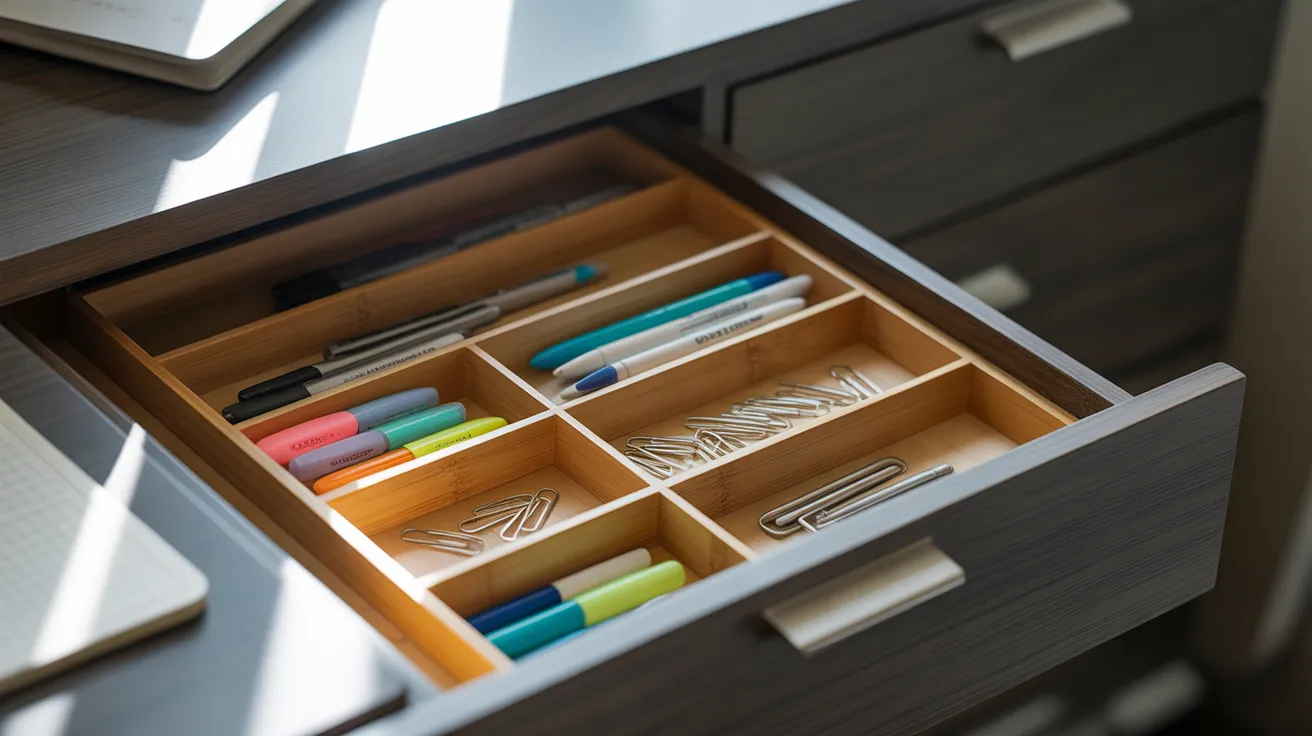
Putting It Into Practice: Two Mini-Makeovers
Abstract concepts are helpful, but seeing them in action makes them concrete. Let’s walk through two common clutter hotspots—the home office desk and the kitchen command center—and apply the principles of the KonMari method to boost productivity and restore calm. These are not massive, weekend-long overhauls, but focused, category-based tidying sessions that yield immediate results.
Mini-Makeover 1: The Home Office Desk
The “before” state is familiar to many. The desk is a landscape of paper piles—old reports, pending bills, and children’s drawings. A cup overflows with pens, markers, and highlighters, many of them dried out. A tangle of mysterious cords snakes out from behind the monitor. The space is used for work, but also for paying bills, online shopping, and as a dumping ground for pocket contents. The visual friction is high, making it difficult to settle into deep work.
The process begins with the KonMari tidying festival, but on a micro scale. First, we tackle the paper category. Every single piece of paper from the desk, drawers, and surrounding shelves is gathered into one pile. We apply the one-touch rule: each piece is handled and a decision is made. Is it trash? Does it need to be actioned (e.g., pay a bill)? Or does it need to be filed? The “action” papers go into a single, slim vertical file holder. The “to file” papers go into a designated tray to be filed once a week. Everything else is recycled. Immediately, the surface is clearer.
Next, we address office supplies. Every pen, paperclip, and stapler is gathered. The dried-out pens are discarded. The excess is stored away. Only a few essential, working pens are returned to the cup on the desk. This creates a working zone for writing. Finally, the cables. All of them are unplugged and gathered. We identify what each one is for. The redundant or unidentified cables are discarded. The essential ones are neatly bundled with velcro ties and placed in a small box, their designated home. A multi-port charger is placed on the desk to create a single, clean charging station.
The “after” state is transformative. The desk surface is 80% clear, reserved only for a laptop, a monitor, a lamp, a single notebook, and the pen cup. The vertical file holder contains all active tasks. The drawers are neatly zoned with dividers for remaining supplies. The space is no longer a multi-purpose dumping ground; it is a dedicated “deep work” zone. The visual friction is gone, replaced by an inviting calm that makes it easy to sit down and focus.
Mini-Makeover 2: The Kitchen Command Center
The “before” state is a specific kitchen counter that has become the de facto family inbox. It’s covered in a chaotic mix of unopened mail, school permission slips, keys, stray coupons, sunglasses, and receipts. It’s the first surface you see when you walk in the door, and its clutter sets a stressful tone for the entire home. Finding an important paper is an archaeological dig.
The process again starts with gathering by category. All paper is collected into one pile. Following the one-touch rule, mail is opened and immediately sorted: junk mail to recycling, bills to the “action” pile, and important documents to be filed. School papers are reviewed, signed, and placed directly into the child’s backpack. Keys are gathered from every dish and surface where they’ve been dropped. All the miscellaneous items—sunglasses, loose change, batteries—are collected.
Now, we create a system by assigning homes. A simple, three-tiered wall-mounted file holder is installed. One slot is for incoming mail, one is for outgoing mail, and one is for papers that need action within the week. This becomes the new, official home for all paper. A small, decorative bowl is placed on the counter; this is now the designated home for keys and wallets only. A small hook is added to the side of a cabinet for sunglasses. The rest of the miscellaneous items are returned to their proper homes throughout the house.
The “after” state is a calm, functional command center. The counter is clear. The wall-mounted file holder contains all paper in a neat, visible system. The key bowl makes leaving the house frictionless. This small zone no longer generates anxiety; it provides a sense of control and order. It has been transformed from a clutter hotspot into a streamlined system that supports the smooth functioning of the household, a perfect example of tidying your space for focus on a family-wide scale.

Frequently Asked Questions About Tidying for Productivity
Embarking on a tidying journey, especially with the goal of improving productivity, often brings up practical questions. Here are answers to some of the most common challenges people face when applying the principles of Marie Kondo to their work and home life.
How do I deal with the mountain of paper I’ve accumulated over the years?
Paper is one of the most challenging categories because it feels important and is time-consuming to sort. The KonMari method is uncompromising here: you must gather every single piece of paper into one spot before sorting. The core rule is to discard everything by default, except for three categories: 1) currently in use, 2) needed for a limited period of time (like active contracts or tax documents), and 3) must be kept indefinitely (like birth certificates or legal deeds). For everything else, be ruthless. Old utility bills, expired warranties, and manuals for products you can look up online should all be recycled. For the papers you must keep, invest in a simple filing system. A small file box with clearly labeled folders is often sufficient. The key is to stop the inflow by digitizing where possible and dealing with new paper immediately using the one-touch rule.
My family or roommates are not on board. How can I maintain a tidy space?
This is a very common and sensitive issue. The most important rule, according to Marie Kondo, is to never discard someone else’s belongings without their permission. Your focus should be exclusively on your own items and your own spaces. Start with your personal belongings—your clothes, your books, and your side of the bedroom. Create a personal sanctuary of order. For your workspace, define its physical boundaries. Often, when others see the positive impact it has on your mood and efficiency, they become curious. Lead by quiet example. For shared items, suggest creating simple, intuitive homes: a basket for remotes, a hook for keys, a designated charging drawer. Make the system so easy to use that it becomes the path of least resistance for everyone.
I struggle with sentimental items. How can I declutter them without feeling guilty?
Sentimental items are tidied last for a reason: by the time you get to them, you have honed your decision-making skills on less emotional categories. When you approach these items, the question is not “Does this spark joy?” but “Does this memory spark joy?” You are not discarding the person or the memory; you are only letting go of the physical object. You don’t need to keep every drawing your child ever made to cherish their childhood. Select a few of the very best and display them or store them in a beautiful “treasure box.” For items from loved ones who have passed, ask yourself if keeping the object truly honors their memory, or if it has become a burden. Keep only the few items that make you feel genuinely happy and connected, and let go of the rest with gratitude for the role they played in your life.
My apartment is tiny. Do these principles still work if I don’t have much storage?
Absolutely. In fact, the KonMari method is even more powerful for small spaces because it forces you to be intentional about every single item you own. The first step—a thorough decluttering—is the most important. You simply cannot organize a small space that is overflowing with things you don’t need. Once you have pared down to your essentials, the focus shifts to clever storage. Use vertical space with tall shelves. Use the space under your bed. Choose multi-functional furniture. And most importantly, assign a specific home for everything. In a small space, a single out-of-place item can make the whole room feel cluttered. A consistent daily reset is non-negotiable to maintain a sense of calm and order.
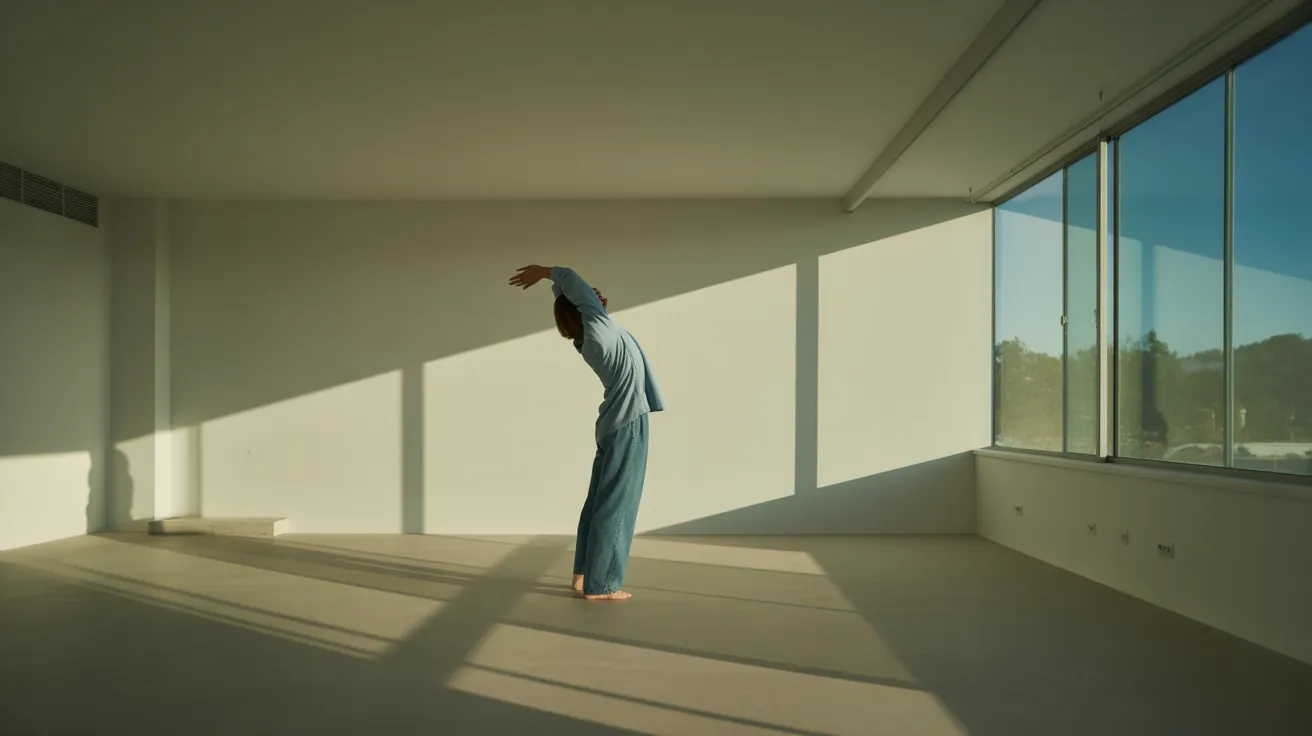
Your First Steps to a More Focused Life
We’ve explored how the KonMari method is far more than a decluttering trend; it’s a systematic approach to designing an environment that fosters focus, creativity, and calm. By reducing visual friction and eliminating decision fatigue, you stop draining your mental energy on managing “stuff” and free it up for the work and life you want to build. It’s about shifting from a reliance on willpower to a reliance on well-designed systems.
The journey from a cluttered, distracting space to a productive sanctuary doesn’t happen overnight, but it begins with a single, intentional step. You don’t need to tackle your entire home this weekend. The goal is to build momentum through small, consistent actions that prove to yourself how much better it feels to live and work in an ordered environment.
Instead of feeling overwhelmed by the big picture, commit to a few simple resets this week. These small habits are the foundation upon which a permanently tidy and productive space is built. They are your first steps toward reclaiming your focus and creating a life of intentionality and ease.
Here are three simple resets you can start this week:
1. The 10-Minute Tidy. For the next three days, set a timer for 10 minutes at the end of your workday. In that time, do nothing but return your workspace to its neutral state. Put papers away, return pens to their cup, wipe down the surface, and put your chair back in place. Experience the profound difference it makes to start the next morning with a clean slate.
2. The Inbox Reset. Choose one day this week to apply the one-touch rule to your physical mail. As soon as it comes into your home, process all of it down to zero. Recycle the junk, file what’s important, and put anything requiring action into a single, designated tray. Notice how it feels to have no mystery piles of paper.
3. The Digital Desktop Sweep. Before you shut down your computer today, create a single folder on your desktop named “Process.” Drag every single loose file and screenshot into that one folder. Instantly, your digital workspace will feel calmer and more focused. You can sort the folder later; for now, just enjoy the clarity.
By practicing these small acts of order, you are not just cleaning up; you are actively designing a more productive and peaceful life. You are creating an environment that serves your goals, respects your attention, and gives you the space you need to thrive.
Disclaimer: The information provided in this article is for informational purposes only and does not constitute professional, financial, or legal advice. Please consult with a qualified professional for advice tailored to your specific situation.
For expert guidance on productivity and focus, visit Mindful.org, American Psychological Association (APA) and Society for Industrial and Organizational Psychology (SIOP).

